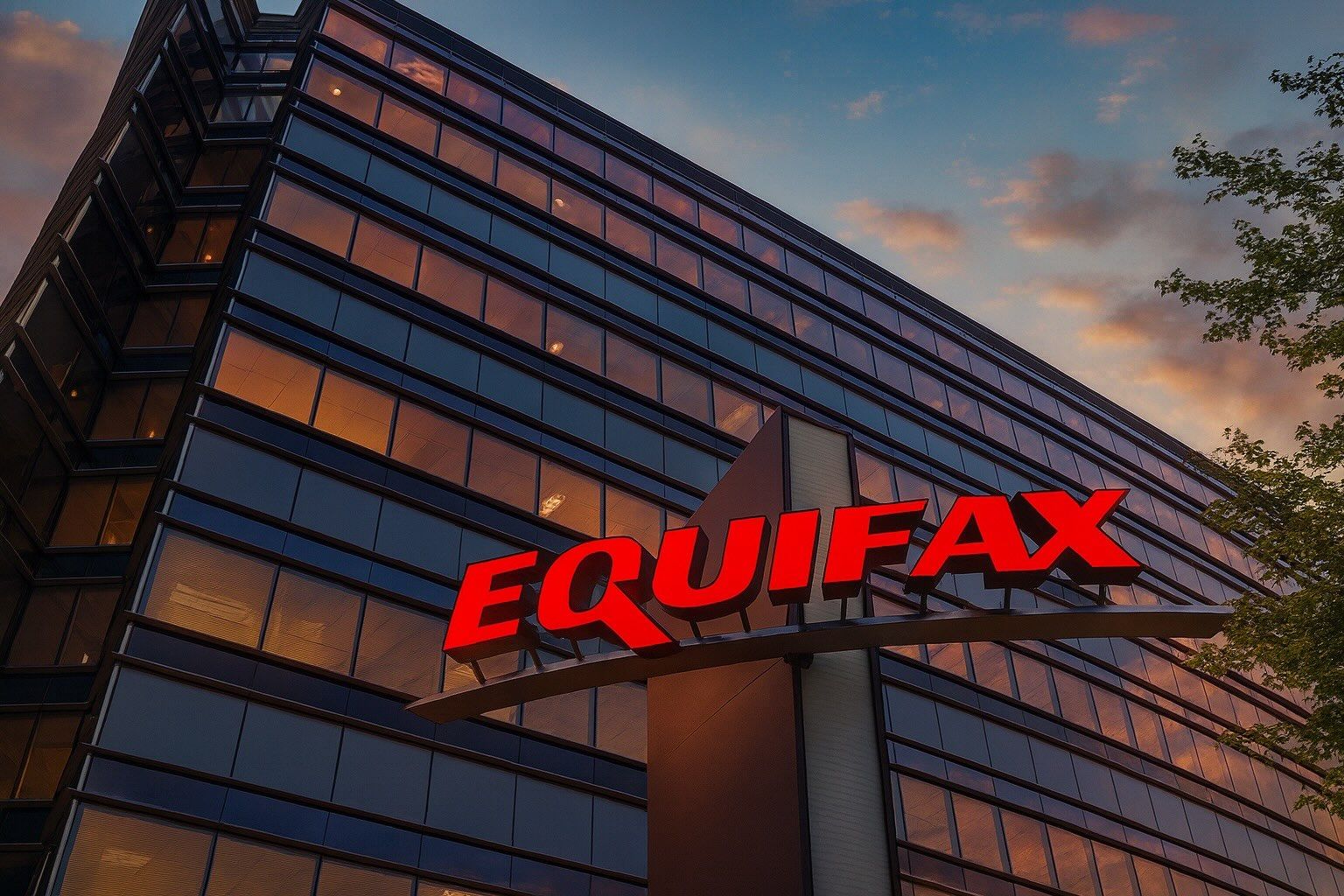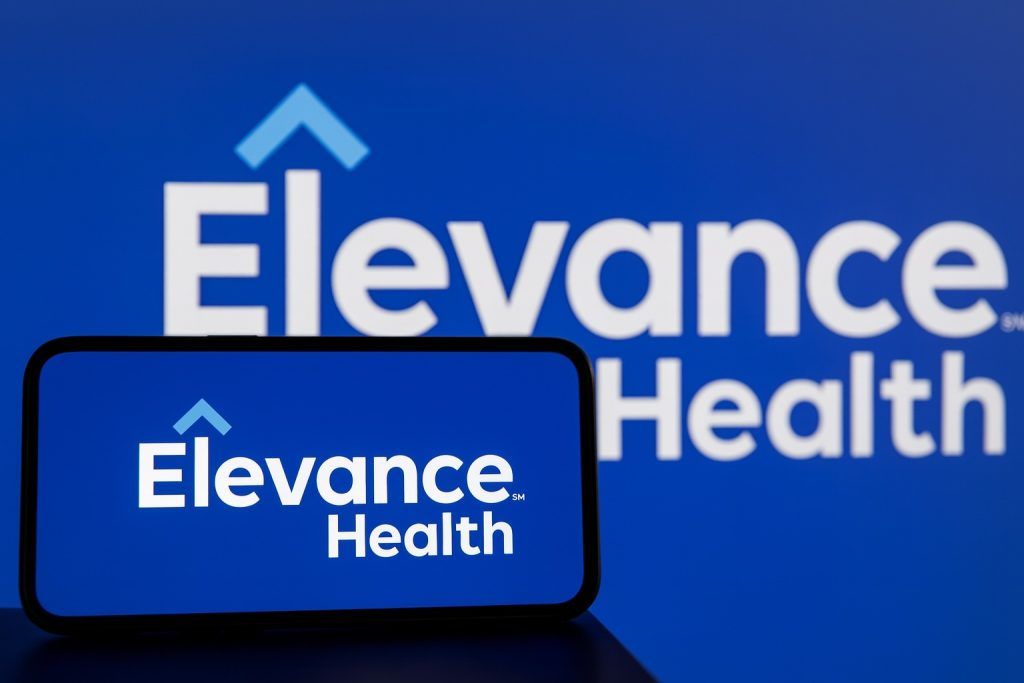- Stock Price: Equifax (NYSE: EFX) stock traded around $231 heading into Oct. 21, 2025, roughly flat in recent days. The stock is down about 6% in the past 3 months and 15% over the last year amid broader market volatility [1]. Early trading Tuesday showed a modest uptick as investors reacted to the latest earnings news.
- Q3 Earnings Beat: Equifax reported third-quarter 2025 adjusted earnings of $2.04 per share, topping Wall Street’s $1.94 consensus by 5% [2]. Revenue of $1.55 billion also edged past estimates ($1.52B expected) [3], as the credit-data firm rode strength in its U.S. mortgage and verification businesses. GAAP net income was $160.2 million ($1.29 per share), up 13% year-over-year [4] [5].
- Raised Outlook: Buoyed by the beat, Equifax raised its full-year forecast. It now projects 2025 earnings per share of $7.55–$7.65 (up about $0.12) on revenue of $6.03–$6.06 billion, slightly above prior guidance and consensus [6] [7]. Fourth-quarter EPS is expected between $1.96 and $2.08 on revenue of $1.51–$1.54B [8]. The company also boosted its free cash flow target to $950–$975 million (from ~$900M) amid strong operational performance [9].
- Analyst Sentiment: Wall Street’s outlook is cautiously optimistic. Many analysts reaffirmed Buy/Outperform ratings, though a few trimmed price targets in recent weeks. The average 12-month price target is about $278, implying ~20% upside from current levels [10]. For example, Wells Fargo reiterated an “Overweight” rating on EFX on Oct. 15 but lowered its target to $285 from $300 [11]. Oppenheimer assumed coverage at “Outperform” with a $271 target, and Needham reiterated a Buy with a $295 target [12]. In early October, BofA Securities cut its target to $250 (from $285) while maintaining a Neutral stance [13]. Overall, the consensus rating leans toward “Moderate Buy,” reflecting confidence in Equifax’s growth trajectory [14].
- Corporate Developments: Equifax is actively expanding its product offerings and market reach. Notably, it introduced a new mortgage credit score pricing strategy to challenge rival FICO. Starting in 2026, Equifax will offer VantageScore 4.0 mortgage scores at $4.50 – more than 50% cheaper than FICO’s planned $10 fee – and even provide free VantageScores to lenders who also buy FICO scores through 2026 [15]. CEO Mark Begor hailed the move as supporting the end of a “30-year FICO scoring monopoly” in U.S. mortgages and fostering “open competition” to lower costs for homebuyers [16]. The pricing shake-up, announced Oct. 7, drew praise from industry experts as a potential long-term competitive advantage for Equifax.
Stock Price & Recent Performance
Equifax’s stock has been range-bound in recent weeks, hovering in the low-$230s per share. It closed at $231.12 on Oct. 20 [17], and despite a solid year-to-date performance in 2025, shares remain about 15% lower than a year ago [18]. Elevated interest rates and recession worries weighed on credit industry stocks earlier this year. However, sentiment has improved recently as the Federal Reserve’s policy outlook turned more dovish this fall and tech-focused stocks rebounded. Equifax stock is up roughly 2% for 2025 so far, outperforming some peers, and has climbed about 50% over the past five years (even accounting for volatility).
In the past week, EFX shares traded relatively flat ahead of earnings, then ticked higher on Oct. 21 after the company’s upbeat report. The early-morning earnings release and guidance hike spurred modest buying in pre-market trading. By midday Tuesday, Equifax stock was trading in the green, as investors digested the news of better-than-expected results and an improved outlook. Volume was above average, indicating heightened interest from both institutional and retail investors post-earnings.
Despite recent gains, Equifax’s valuation has actually become more attractive following the stock’s pullback over the last year. The company’s price-to-earnings (P/E) ratio has eased from around 31 to 26 in the most recent quarter, making shares look more reasonably priced relative to earnings growth [19]. This has bolstered investor sentiment. As Finimize noted, analysts’ “buy” ratings continue, with expectations for healthy profits ahead [20]. The combination of improving fundamentals and a cheaper valuation has some market watchers seeing room for the stock to run, provided Equifax can execute on its growth plans.
Earnings Beat & Upbeat Guidance
Equifax delivered a solid beat on its Q3 numbers, showing resilience amid a mixed economic backdrop. Adjusted earnings came in at $2.04 per share, handily topping consensus estimates of ~$1.94 [21]. That represented high-single-digit growth from a year ago. On a GAAP basis, net income was $160.2 million (or $1.29 per share), up 13% year-over-year [22]. Executives said the earnings upside was driven by strong revenue and effective cost controls, even as certain markets (like hiring and mortgage lending) remained challenging.
Revenue for the third quarter reached $1.5449 billion, a 7% increase from a year earlier [23]. This also slightly exceeded analysts’ expectations (~$1.52B) [24], marking Equifax’s second straight quarterly beat on the top line. Notably, growth was broad-based across segments:
- U.S. Information Solutions (USIS) revenue jumped 11% year-on-year, far above the unit’s long-term target range [25] [26]. Within USIS, mortgage-related revenue surged 26% – an impressive result given the cooling housing market – while non-mortgage (consumer and commercial) revenue rose 5% [27]. This suggests Equifax gained share or sold more products even as overall credit inquiries in mortgages declined.
- Workforce Solutions, Equifax’s employment verification and HR analytics arm, grew 5% in Q3 [28]. Verification Services benefited from high-single-digit growth in government sector demand and solid expansion in non-mortgage areas (like auto and consumer lending verifications) [29] [30]. Mortgage verification revenue in this unit inched up 2%, despite fewer home loan applications nationwide.
- International segment revenue rose 6% (7% in local currency), led by strength in Latin America and Canada [31]. Equifax highlighted double-digit growth in certain international markets and credit demand holding up well outside the U.S.
This diversified growth helped offset headwinds. The U.S. housing market, while stabilizing, is still sluggish compared to the pandemic boom years, and employers have pulled back on hiring in some industries – factors that normally temper Equifax’s volumes. Yet the firm managed to outperform the underlying markets, particularly in mortgage. CEO Mark W. Begor attributed this to Equifax’s investments in new products and data capabilities. “Equifax delivered strong third quarter revenue … despite headwinds from the U.S. Mortgage and Hiring markets,” Begor noted, pointing to momentum in new product innovation (a 16% “Vitality Index” of revenue from new products) and share gains in key verticals [32].
Encouraged by the Q3 results, Equifax’s management raised its full-year 2025 guidance. The company now forecasts total revenue of $6.03–$6.06 billion (up from a prior ~$5.99–$6.02B range) and adjusted earnings of $7.55–$7.65 per share [33] [34]. Both midpoints are slightly above Wall Street’s pre-earnings consensus. The guidance implies roughly 7% revenue growth for 2025 – no small feat given the uncertain economy – and reflects confidence that Equifax’s growth initiatives will continue to pay off.
For the upcoming fourth quarter 2025, Equifax expects earnings of $1.96 to $2.08 per share on revenue of $1.51 to $1.54 billion [35]. At the midpoint, that outlook is in line with analysts’ estimates and suggests mid-single-digit growth year-over-year. Executives indicated that mortgage market trends have been slightly better than feared, and they anticipate U.S. mortgage inquiries to decline ~11% in 2025, a milder drop than earlier projections [36] [37]. This improved assumption contributed to the revenue guidance bump.
Equifax also increased its free cash flow projection for 2025 to $950–$975 million (from “$900M+” previously) [38]. The company has been generating healthy cash, aided by the completion of a massive cloud technology overhaul which is reducing operating costs. Strong cash flow is allowing Equifax to both invest in growth and return money to shareholders. In Q3, it repurchased ~1.2 million shares for $300 million and paid about $60M in dividends [39] [40]. Year-to-date, buybacks total $500M as part of a $3 billion repurchase authorization – a sign of confidence from the board. With a “cash conversion” ratio above 100% of net income [41], Equifax’s cash generation is exceeding its own historical framework.
The market reaction to Equifax’s earnings was positive but measured. The stock rose about 2% in pre-market trading on Oct. 21 after the beat and guidance raise became public, according to indications. During the company’s 8:30am ET conference call, executives struck an upbeat tone about growth opportunities in 2026 and beyond. By late morning, EFX shares were trading higher, though not a outsized spike – suggesting the news largely matched investors’ optimistic expectations. The broader market was slightly down on the day, so Equifax’s relative strength stood out. One potential overhang that investors may be considering is the macroeconomic backdrop: if interest rates remain elevated longer than expected, mortgage and lending activity could stay subdued into next year, tempering Equifax’s growth. For now, however, the company’s execution this quarter and improved outlook have reinforced confidence in its post-transformation strategy.
Analyst Reactions & Ratings
Equifax’s better-than-expected quarter and strategic moves have largely validated the bullish view many analysts have held on the stock. As noted, the majority of Wall Street analysts rate EFX as a “Buy” or “Outperform.” According to GuruFocus and FactSet data, 19 analysts covering Equifax have an average 12-month price target of about $277.81, with targets ranging from ~$240 up to $300 [42]. This average implies roughly a 20% upside from the current share price around $230 [43]. The consensus recommendation score is 2.1 (on a scale where 1.0 = Strong Buy, 5.0 = Sell), equivalent to a borderline “Buy/Outperform” [44]. In short, expert sentiment is positive overall, albeit not unanimously euphoric.
In the days leading up to earnings, several analysts fine-tuned their models on Equifax, reflecting both the company’s recent performance and industry conditions:
- On October 15, Wells Fargo analyst Jason Haas reiterated an Overweight rating but trimmed the price target to $285 from $300, citing “a slightly more conservative outlook” despite continued confidence in Equifax’s market position [45].
- On Oct. 13, Oppenheimer (analyst Rayna Kumar) assumed coverage with an Outperform rating, setting a target of $271 (down modestly from the prior $279) [46]. This suggests Oppenheimer sees substantial upside, as $271 is ~17% above recent prices.
- On Oct. 8, Needham & Co. analyst Kyle Peterson reiterated his Buy rating and a $295 price target, voicing strong support for Equifax’s strategy [47]. Peterson noted that Equifax’s latest initiatives (especially in mortgage scoring, discussed below) should help drive growth and “preserve the company’s economics” even as competition intensifies [48]. Needham’s $295 target is among the higher on the Street, reflecting conviction that the stock is undervalued.
- On Oct. 3, BofA Securities (Heather Balsky) maintained a Neutral rating but slashed the target to $250 from $285 [49]. Balsky took a more cautious stance, pointing to mixed macro factors and a lack of near-term catalysts at the time. Even so, her $250 target was slightly above where shares traded prior to earnings, and she acknowledged Equifax’s fundamental improvements post-cloud transformation.
- Seaport Global initiated coverage on Oct. 1 with a Neutral rating [50], adopting a wait-and-see approach given Equifax’s exposure to cyclical credit markets. And back in mid-September, UBS reaffirmed a Buy and actually raised its target from $287 to $297, showing confidence ahead of the earnings season [51].
By and large, no major firm downgraded Equifax following the Q3 report – a sign the results met or beat their expectations. In fact, some analysts are growing more bullish. “Analyst ‘buy’ ratings continue, with expectations for healthy profits ahead,” observed Finimize’s newsroom in its post-earnings recap [52]. Many analysts highlighted that Equifax’s growth in non-mortgage areas and international markets bodes well if the U.S. mortgage cycle turns up next year. Several also emphasized Equifax’s improved margin profile and cash generation, which give it flexibility to weather bumps in the economy.
On the bearish side, a few analysts maintain Hold or Neutral ratings, mainly due to valuation concerns or macro uncertainties. For instance, independent research firm Weiss Ratings kept Equifax at a “Hold (C+)” rating in October, according to MarketBeat. These cautious views generally acknowledge Equifax’s strengths but prefer to wait for a better stock entry point or more clarity on interest rates and credit demand.
Notably, analysts applauded Equifax’s aggressive moves in the mortgage credit score arena. (More on this in the next section.) Needham’s Kyle Peterson called the company’s pricing strategy a “smart counterpunch” that should solidify Equifax’s position. He wrote in a client note that the decision to price VantageScore at $4.50 – well below FICO’s rates – “will be viewed favorably as it provides lenders with multiple options to keep a lid on credit reporting costs during the home buying process” [53]. In Peterson’s view, this approach not only drives goodwill with customers and regulators, but also preserves Equifax’s unit economics by fending off competitive threats. His firm sees this as underappreciated by the market, reinforcing their bullish stance.
Overall, sell-side analysts see headroom for Equifax’s stock if the company can continue executing. The median price target implying ~18% upside aligns with this sentiment [54]. However, analysts will be watching upcoming quarters closely for follow-through on guidance and for any macro shifts. If interest rates fall or the job market re-accelerates, Equifax could get a further boost. Conversely, a prolonged housing slump or credit tightening could temper the pace of growth. At present, the balance of opinion tilts positive, with analysts viewing Equifax as a high-quality franchise that’s emerging from its transformation with improved growth prospects and profitability.
Competitive Moves and Industry Trends
Beyond the headline numbers, Equifax’s management spent significant time discussing strategic initiatives that position the company for long-term growth. A centerpiece is Equifax’s push into a new era of credit scoring competition, which could reshape a key aspect of its industry.
Earlier this month, Equifax announced bold steps to challenge Fair Isaac Corp.’s FICO score dominance in the U.S. mortgage market. In a bid to “promote credit scoring competition”, Equifax unveiled a dramatically lower pricing model for VantageScore 4.0, the alternative credit score developed jointly by the three major bureaus (Equifax, Experian, TransUnion). Starting in 2026, Equifax will charge $4.50 per VantageScore 4.0 used in mortgage underwriting – over 50% below FICO’s planned $10 fee for its newest scores [55]. Equifax also pledged to hold that $4.50 price for two years (2026–2027) and to keep VantageScore prices flat in 2027, giving lenders cost certainty [56].
Moreover, for the remainder of 2025 and all of 2026, Equifax is offering VantageScore 4.0 for free to any lender who is purchasing FICO scores as part of their credit reports [57]. This effectively allows banks and mortgage companies to “test drive” the newer VantageScore alongside FICO at no extra cost, encouraging them to eventually switch or use both. The company is also sweetening the deal by including additional data perks: for example, free employment and income indicators (via The Work Number database) and extra alternative data attributes will be bundled into Equifax mortgage credit reports at no charge [58]. These measures add value for lenders beyond just scoring, aiming to make Equifax’s credit report “the richest and most cost-effective” option in the market.
Equifax’s CEO Mark Begor framed this as a mission-driven move. “We support [the] decision in July to end the 30-year FICO scoring monopoly in the mortgage industry, and believe the best way to drive change… is through open competition,” Begor said [59]. He was referring to the Federal Housing Finance Agency (FHFA) – regulator of Fannie Mae and Freddie Mac – which earlier this year approved the use of VantageScore 4.0 (in addition to FICO) for conforming mortgages. That landmark policy change opened the door for lenders to consider alternative scores after decades of FICO dominance. Equifax is seizing the moment to undercut FICO’s pricing and grab share in a newly competitive landscape.
Industry observers are very intrigued by this development. MarketWatch dubbed it a “credit-score pricing counterpunch” by Equifax, noting it has drawn praise for its potential to boost Equifax’s profits long-term by expanding its scoring business [60]. If successful, more lenders adopting VantageScore could mean millions in incremental revenue for Equifax (which co-owns VantageScore Solutions) and also greater pull-through for Equifax’s credit files and verification services. Importantly, it could also increase credit access – VantageScore’s model, which uses trended and alternative data, can score an estimated 33 million additional U.S. adults who don’t have a FICO score [61]. That aligns with regulators’ goals to broaden access to credit, giving Equifax a favorable narrative with policymakers.
On Wall Street, analysts reacted favorably. As mentioned, Needham’s Kyle Peterson sees the move preserving Equifax’s economics and insulating it from FHFA criticism [62]. He noted the “incremental value” Equifax provides (via free data extras) likely outweighs the lower price point, which could actually put Equifax in a stronger competitive position [63]. Other analysts, like those at Barclays and Morgan Stanley (according to media reports), also viewed the pricing cut as strategically sound – essentially a long-term investment in market share that could pay off once mortgage volumes rebound.
Of course, Equifax isn’t acting altruistically – it’s a strategic offensive. FICO itself has been making moves that threaten the bureaus’ turf. Notably, Fair Isaac (FICO) announced a partnership to sell credit reports directly to lenders, bypassing the bureaus, earlier in 2025. That was seen as FICO’s attempt to encroach on the bureaus’ core credit file business (and a response to the FHFA’s acceptance of VantageScore). Equifax’s aggressive pricing can be seen as a response to FICO’s maneuver. Barron’s reported on Oct. 8 that “Equifax Strikes Back in Battle of the Credit Scores. Fair Isaac Stock Tumbles.” [64] Indeed, on the day Equifax’s plan became public, FICO’s stock fell ~1.5%, reflecting investor concern that its high-margin mortgage score franchise could be eroded [65]. This underscores how significant Equifax’s play could be in reshaping industry dynamics.
Beyond credit scores, Equifax is riding broader industry trends in data and analytics. The company’s massive investment (over $1.5B) in cloud technology and data infrastructure is enabling it to roll out new products faster and integrate datasets in ways that peers find hard to match. The firm boasted a “Vitality Index” (percentage of revenue from new products) of 16% in Q3 – well above its 10% long-term goal [66]. Recent launches span areas like fraud prevention, digital identity verification, and cybersecurity risk ratings – leveraging Equifax’s troves of consumer and commercial data. These offerings open up new revenue streams beyond traditional credit reporting.
More broadly, digital innovation is transforming financial data analytics worldwide, and Equifax aims to be at the forefront. Finimize notes that initiatives which boost homebuyer affordability (like Equifax’s score pricing) illustrate how data providers are adapting to meet changing consumer and regulatory needs [67]. Companies with diverse global footprints and advanced tech, like Equifax, tend to be more resilient and ready to capture opportunities as markets evolve [68]. One example is Equifax’s Workforce Solutions unit, which harnesses AI and cloud data to streamline employment verifications – a service seeing structural growth as the gig economy expands and employers automate hiring checks. Another example: in international markets, Equifax is partnering with banks and fintechs to incorporate alternative data (such as telecom and utility payment histories) into credit scoring for thin-file customers. These efforts not only drive revenue but also align with financial inclusion trends encouraged by regulators.
The competitive landscape for Equifax includes fellow bureaus Experian and TransUnion, fintech upstarts, and specialty data firms. Experian (EXPGY) and TransUnion (TRU) will report earnings in coming days; analysts expect they also benefited from slight improvements in credit activity this quarter. Equifax’s outperformance in U.S. mortgage (13% growth vs Experian’s ~flat mortgage revenue, per one estimate) suggests it may be taking share, possibly due to its new cloud-enabled products and aggressive sales efforts. All three bureaus face similar macro forces – interest rates, consumer borrowing trends, regulatory scrutiny – and have been diversifying into adjacency markets like identity verification, employer services, and marketing data. In that context, Equifax’s strong results and innovative moves have likely not gone unnoticed by its rivals.
Outlook: Cautious Optimism Ahead
Looking ahead, Equifax enters the final stretch of 2025 with momentum, but also mindful of external headwinds. The company’s raised guidance reflects confidence in its execution, yet the ranges leave room for economic variability. A key question is how the macroeconomic environment will unfold in 2026. Many economists expect the Federal Reserve to begin cutting interest rates in 2025–2026, which could reinvigorate mortgage lending and consumer credit demand. If that scenario plays out, Equifax is well positioned to benefit from a credit cycle upswing. Higher home sales and more refinancing activity would boost its mortgage credit report volumes, and a stronger job market would drive more verifications business – essentially tailwinds for Equifax’s core segments.
Even in a lukewarm economy, Equifax has proven it can grow through product innovation and market share gains. The investments in cloud and data analytics are enabling the firm to roll out products that command a premium and solve new problems for customers. For example, Equifax’s new EFX Advantage “data fabric” (highlighted at its June 2025 Investor Day) lets clients access multiple Equifax databases via a single API, providing faster, richer credit insights. Such capabilities help Equifax embed itself deeper into clients’ workflows, potentially increasing revenue per customer. The company’s focus on cross-selling Workforce Solutions and international services to U.S. clients (and vice versa) is another lever for organic growth.
Financially, Equifax’s operating margins are expected to improve in coming quarters as the last of its cloud transition costs fade. Management reiterated a long-term target of 8–12% annual revenue growth and 50 basis points of margin expansion per year, through a combination of organic growth and bolt-on acquisitions [69]. Achieving that in the near term may be challenging if the economy slows, but the ambition underscores the company’s growth mindset post-transformation.
One area to watch is potential M&A or partnerships. Equifax has a track record of acquiring smaller data and software firms (25 acquisitions since 2018) to augment its offerings [70]. With a healthier balance sheet and robust cash flow, the company could resume tactical M&A in fields like cybersecurity ratings, open banking data, or fintech analytics to stay ahead of the curve. Similarly, partnerships (like its recently expanded pact with Pagaya on AI underwriting, and with fintech Spring Labs on decentralized data sharing) could open new avenues.
Regulatory developments will also shape the outlook. In Washington, D.C., there’s been discussion of credit reporting reforms – from how medical debt is reported to possibly revamping the dispute process – which could impose changes on bureau processes. Equifax has pledged support for fair credit reporting enhancements, and its embrace of alternative data might help it adapt to any rule changes that encourage more inclusive scoring. Another factor: data privacy and cybersecurity. Equifax infamously suffered a breach in 2017; since then it has invested heavily in security. Ongoing vigilance is crucial not just to avoid fines and damage, but to maintain the trust that underpins its data business. Thus far, 2025 has seen no major security incidents at Equifax (unlike an incident at a rival), which is a positive sign.
Market sentiment on Equifax remains guardedly optimistic. As noted, analysts are mostly bullish, with a consensus that the stock has room to run if targets are met. Investors will be looking for continued earnings beats and effective capital allocation (like buybacks and dividends) to sustain the rally. Equifax’s board did initiate a dividend hike earlier in the year (raising the quarterly payout ~20% to $0.39), and further shareholder returns in 2026 are likely if cash flows stay strong.
In summary, Equifax Inc. enters late 2025 on a high note: delivering growth above guidance, investing in innovation, and proactively addressing industry changes. Its stock has underperformed the broader market over the past year, but the combination of improving financial results and strategic initiatives could help close that gap. “Equifax is well-positioned to invest in new technology and expand its services,” thanks to a beefed-up $975M cash flow outlook for 2025 [71]. If economic conditions cooperate, the company’s multi-pronged strategy – from mortgage score disruption to global expansion – suggests brighter days ahead. Still, prudent investors will keep an eye on credit trends and execution risks. For now, the credit-data giant’s trajectory appears to be one of renewed growth, with management and analysts alike expecting Equifax to build on its “New EFX” transformation and deliver value to both consumers and shareholders in the coming year.
Sources:
- Equifax Q3 2025 Earnings Press Release [72] [73] (Equifax Investor Relations)
- Associated Press via Times Union – “Equifax: Q3 Earnings Snapshot” [74] [75]
- Investing.com – Earnings summary and stock performance [76] [77]
- Finimize – “Equifax Raises Outlook as Mortgage and International Revenue Climb” [78] [79]
- GuruFocus – Analyst ratings recap (Oct 1–15, 2025) [80] [81]
- Benzinga – “Equifax Locks In $4.50 VantageScore Pricing… Analyst Sees Upside” (Needham commentary) [82] [83]
- Equifax Press Release (Oct. 7, 2025) – “Expands Mortgage Credit Offerings to Promote Competition” [84] [85]
- MarketBeat/PRNewswire – Market analysis and other analyst actions [86] [87].
References
1. www.investing.com, 2. www.investing.com, 3. www.investing.com, 4. investor.equifax.com, 5. www.timesunion.com, 6. www.investing.com, 7. www.timesunion.com, 8. www.timesunion.com, 9. investor.equifax.com, 10. finimize.com, 11. www.gurufocus.com, 12. www.gurufocus.com, 13. www.gurufocus.com, 14. www.gurufocus.com, 15. investor.equifax.com, 16. investor.equifax.com, 17. www.investing.com, 18. www.investing.com, 19. finimize.com, 20. finimize.com, 21. www.investing.com, 22. investor.equifax.com, 23. investor.equifax.com, 24. www.investing.com, 25. investor.equifax.com, 26. investor.equifax.com, 27. investor.equifax.com, 28. investor.equifax.com, 29. investor.equifax.com, 30. investor.equifax.com, 31. investor.equifax.com, 32. investor.equifax.com, 33. www.investing.com, 34. www.timesunion.com, 35. www.timesunion.com, 36. www.reuters.com, 37. www.reuters.com, 38. investor.equifax.com, 39. investor.equifax.com, 40. investor.equifax.com, 41. investor.equifax.com, 42. www.gurufocus.com, 43. www.gurufocus.com, 44. www.gurufocus.com, 45. www.gurufocus.com, 46. www.gurufocus.com, 47. www.gurufocus.com, 48. www.benzinga.com, 49. www.gurufocus.com, 50. www.gurufocus.com, 51. www.gurufocus.com, 52. finimize.com, 53. www.benzinga.com, 54. finimize.com, 55. investor.equifax.com, 56. investor.equifax.com, 57. investor.equifax.com, 58. investor.equifax.com, 59. investor.equifax.com, 60. www.marketbeat.com, 61. investor.equifax.com, 62. www.benzinga.com, 63. www.benzinga.com, 64. www.marketbeat.com, 65. www.marketbeat.com, 66. investor.equifax.com, 67. finimize.com, 68. finimize.com, 69. www.marketscreener.com, 70. www.investing.com, 71. finimize.com, 72. investor.equifax.com, 73. investor.equifax.com, 74. www.timesunion.com, 75. www.timesunion.com, 76. www.investing.com, 77. www.investing.com, 78. finimize.com, 79. finimize.com, 80. www.gurufocus.com, 81. www.gurufocus.com, 82. www.benzinga.com, 83. www.benzinga.com, 84. investor.equifax.com, 85. investor.equifax.com, 86. www.gurufocus.com, 87. www.marketbeat.com








